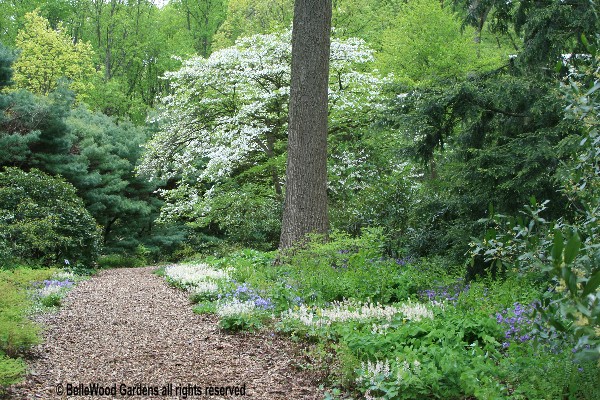
Wednesday, 28 April 2010
Covering Ground at Mt. Cuba
Bijoux plants and precious combinations may be enticing. They can even be a workable possibility if all the ground you have to cover is a handkerchief size townhouse plot. Anything more, and either you cover ground with plants of your choice or the space becomes carpeted on its own. Unfortunately the results are often weedy. And no, not all weeds are wildflowers.
Rather than the trio of Japanese pachysandra / running myrtle / English ivy that appears by the yard around office buildings and in public spaces Mt. Cuba apparently relies on a proven few native plants, all with more panache.

Notice the sea foam splatter of white on both sides of the path.
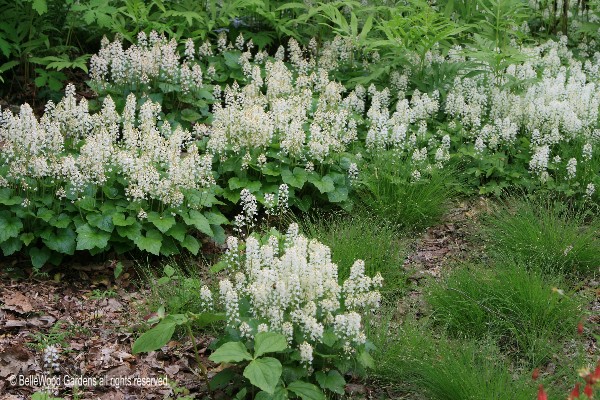
Foam flower, Tiarella cordifolia, is a charming carpeting plant. Here is where Latin nomenclature
is especially important. This species runs. T. wherryi clumps. That's an important difference.
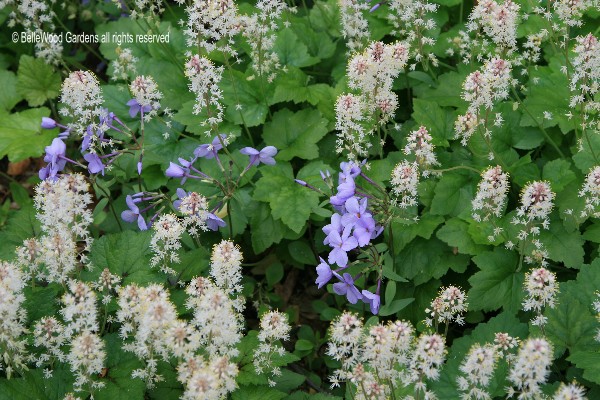
Here's Phlox stolonifera, a creeping, evergreen, flowering, native choice for covering ground
interweaving itself with foam flower for a very attractive tapestry of plants.

Same color scheme, using forest phacelia, Phacelia bipinnatifida instead of the phlox. Note that
the fern-like lead in the mid-foreground is Dicentra canadensis, soon to go dormant. The phacelia,
it is important to know, is a biennial. One year from seed, second year to flower, then dies. For flower
every year a colony must be established. Mt. Cuba Center apparently has this technique down pat.
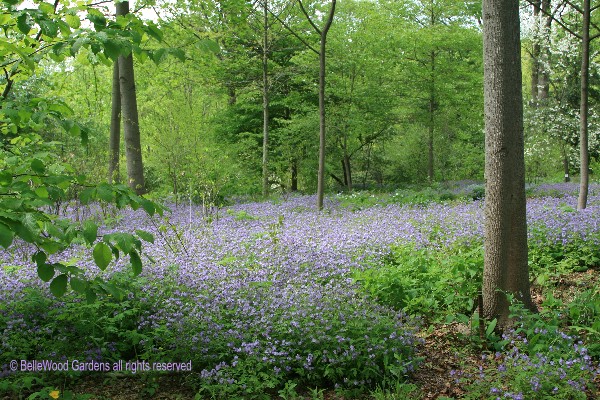
.

The soft smoky blue color of the forest phacelia harmonizes nicely with numerous other plants
such as the deeper hue of dwarf larkspur, Delphinium tricorne. Remember that
the dwarf larkspur is perennial but summer dormant while forest phacelia dies after flowering.
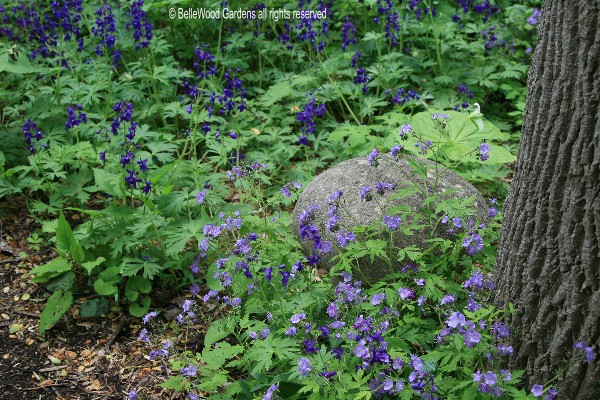
.

A lovely combination of flowers and foliage- the airy sprawl of forest phacelia against the bolder leaves
of a dark, copper-purple heuchera. A pleasant pairing in terms of interesting contrast and color.
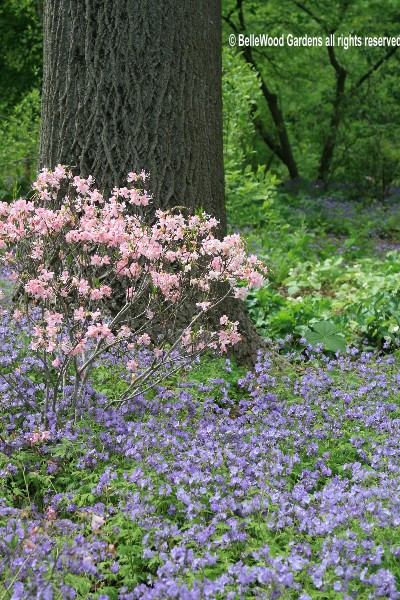
A delicate pink azalea ( ? nudiflorum, maybe vaseyi) harmonizing with
the forest phacelia. Both are softer tints with an admixture of white
rather than an intense deeply pigmented colors, perhaps harsh result.
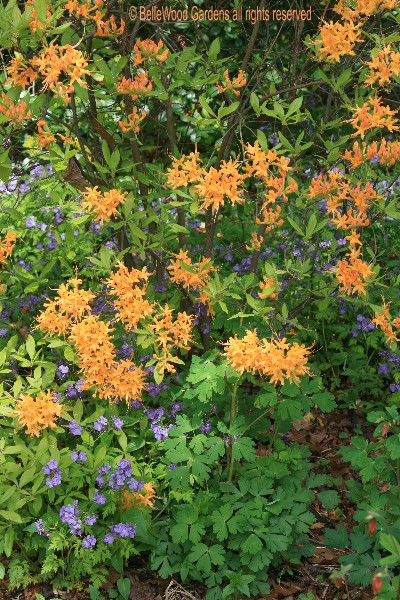
Wow! Colors opposite each other on a color wheel are called
complimentary colors. And just as a little chile pepper compliments
a dish, too much renders it inedible. Orange of the flowers on the
Cumberland azalea, Rhododendron cumberlandense (Previously
R. bakerii) is opposite to blue on a color wheel. Remember to use
such contrasts carefully. Choose one or the other color, select some tints
and tones of that hue, before selecting your complement. Now comes
the fun part - finding the plants to match your visualized color harmony.